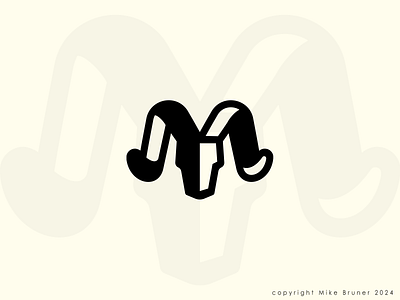 That is true both in the ʻbad faithʼ identification of lady with manʼs view of her, and within the genuine embracing by ladies of their own destiny as free existents. This could also be not more than the admission that ʻpureʼ epistemological discourses, freed from any ontological assumptions, are usually not potential. However, when ʻotherʼ is understood in this sense, in response to Hegel, there are two pathways open in direction of confirmation of self-conscious being: fighting and productive work. At the identical time, however, the road to recognition from womenʼs place as ʻotherʼ can be fraught with difficulty. She argues that this is true whether or not one understands the body as pure facticity (a thing) or in phenomenological phrases (her personal place) as ʻthe instrument of our grasp upon the world, a limiting issue for our projectsʼ. Between three and 6 months of age, your baby is in a position to grasp objects. The apprentice period begins when a younger woman finds an onesan (“older sister”), a full geisha who will serve as her mentor. Even when understood by way of ʻbecomingʼ rather than ʻbeingʼ, due to this fact, de Beauvoir argues consistently that woman is forged (by men and by herself) as a very specific kind of different, one faced with different sorts of boundaries to these blocking the path to full recognition of serfs.
That is true both in the ʻbad faithʼ identification of lady with manʼs view of her, and within the genuine embracing by ladies of their own destiny as free existents. This could also be not more than the admission that ʻpureʼ epistemological discourses, freed from any ontological assumptions, are usually not potential. However, when ʻotherʼ is understood in this sense, in response to Hegel, there are two pathways open in direction of confirmation of self-conscious being: fighting and productive work. At the identical time, however, the road to recognition from womenʼs place as ʻotherʼ can be fraught with difficulty. She argues that this is true whether or not one understands the body as pure facticity (a thing) or in phenomenological phrases (her personal place) as ʻthe instrument of our grasp upon the world, a limiting issue for our projectsʼ. Between three and 6 months of age, your baby is in a position to grasp objects. The apprentice period begins when a younger woman finds an onesan (“older sister”), a full geisha who will serve as her mentor. Even when understood by way of ʻbecomingʼ rather than ʻbeingʼ, due to this fact, de Beauvoir argues consistently that woman is forged (by men and by herself) as a very specific kind of different, one faced with different sorts of boundaries to these blocking the path to full recognition of serfs.
 This does not mean that biology has no significance at all; de Beauvoir returns repeatedly in her evaluation to womanʼs bodily situation as a key side of her peculiar evolution as an existent, significantly within undeveloped primitive societies. This positioning, while in full contradiction to the character of ladies as existents, is not inexplicable in the sunshine of the physical, social and financial context of primitive agricultural societies and the forms of legal, social and economic organization that have succeeded them. De Beauvoir does see lack of access to productive work as an essential a part of womenʼs historic inability to define themselves when it comes to transcendent projects, arguing that the occasions in the course of the course of historical past when women have labored outside of the home context have raised the status of women. For de Beauvoir, the sources of this early (primitive) way of thinking must do with womanʼs position in reproduction and her inability in technologically restricted societies to assert herself beyond her bodily situation of biological enslavement to the species.
This does not mean that biology has no significance at all; de Beauvoir returns repeatedly in her evaluation to womanʼs bodily situation as a key side of her peculiar evolution as an existent, significantly within undeveloped primitive societies. This positioning, while in full contradiction to the character of ladies as existents, is not inexplicable in the sunshine of the physical, social and financial context of primitive agricultural societies and the forms of legal, social and economic organization that have succeeded them. De Beauvoir does see lack of access to productive work as an essential a part of womenʼs historic inability to define themselves when it comes to transcendent projects, arguing that the occasions in the course of the course of historical past when women have labored outside of the home context have raised the status of women. For de Beauvoir, the sources of this early (primitive) way of thinking must do with womanʼs position in reproduction and her inability in technologically restricted societies to assert herself beyond her bodily situation of biological enslavement to the species.
Mutual recognition between women as women has solely limited liberatory potential exterior of the conversion of the male perspective which defines how women see themselves and each other. She is particularly insistent that the truth that ladies haven’t voluntarily and nonnaturally risked their lives has basically affected the likelihood of their recognition as equals to their male oppressors. At the identical time, nonetheless, it is obvious that in thus far as the pattern of recognition adjustments, what it means for women to be confirmed as unbiased existents is to be recognized as what man already is, always defining himself in transcendence of nature and facticity. In de Beauvoirʼs case, nevertheless, work doesn’t operate in the same approach to present the serf a clear unbiased route to freedom. This has, nevertheless, been put down by order of the magistrates, on which account we should not have noticed it-our plan being somewhat to notice the evils that be, than these which were-however as it may revive, and is very probably nonetheless to exist in u, small degree, we predict it a part of our duty to heat incautious persons how they settle for such invitations. De Beauvoir argues that there are two conceptions of ʻotherʼ which play an element in understanding how girl in the fashionable age has come to be, both of them echoing levels of Hegelʼs story of the event of self-consciousness within the Phenomenology.
De Beauvoir transposes Hegelʼs account of the emergence of self-consciousness from life on to a historical stage and her evaluation becomes in impact the tracing of the possibilities of asserting womenʼs being as existence in several historic eras, from the ancient world to modernity. De Beauvoir locates this mode of thinking girl in early agricultural societies, with the worship of girl as Earth Goddess and with the myth of matriarchy. On de Beauvoirʼs account, girl is positioned from the earliest occasions as neither being nor existence, or as concurrently being and existence in a approach which disrupts thinking ʻunder the sign of dualityʼ, which is itself the mark of existence versus being. At the center of de Beauvoirʼs argument as to the nature of womanʼs ʻpossibilitiesʼ (with which the remainder of the ebook as a complete is anxious) is the notion of woman as ʻotherʼ. The lord cannot be satisfied with relations to mere life and exterior objects; he wants an ʻotherʼ topic to confirm his existence as something greater than life. In seeing the lord-serf dialectic as central to understanding how girls have come to be as they’re, de Beauvoir, like Kojève, places intersubjective recognitive relations at the center of each oppression and liberation.